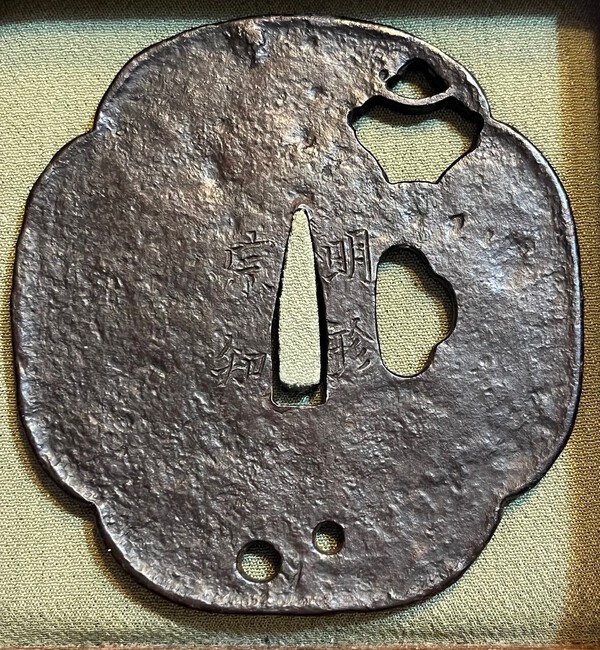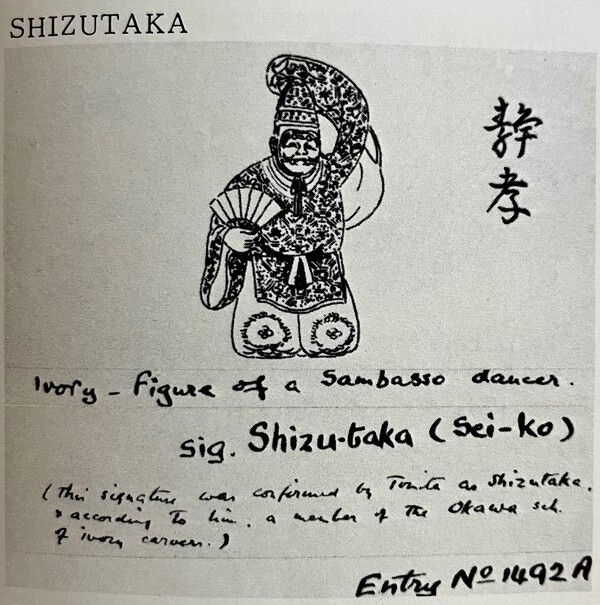-
Posts
13,559 -
Joined
-
Last visited
-
Days Won
240
Content Type
Profiles
Forums
Events
Store
Downloads
Gallery
Everything posted by Bugyotsuji
-
It depends what you want them for. They seem very cheap, but the condition is not great. Some people like them like that, though, honest and used. Either for use just like that, or for a restoration project. Do you want them to complete a set of armour, or to keep like that, as study pieces perhaps? Or will yu be wearing them?
-
They look 'authentic' to me. Some questions for you. Does a magnet stick to them? Can we see the top edge of one black lacquer lame, heads of a row of sane? Does each lame look solid? Or is each made from a row of upright 'sane', leather or iron or alternating, and covered with lacquer?
-
Impulse buying = *usually fatal. *but not always
-

A question on Yari spear tip sizes.
Bugyotsuji replied to kusunokimasahige's topic in General Nihonto Related Discussion
If I take my yari to the local NBTHK sword appreciation society, they will look at the blade for evidence of which smith might have made it. One of my yari had NBTHK paperwork suggesting Den Munemitsu, for example. So you can see there is some argument for dating a special spear by the workmanship. (Some members on the other hand, said that the hamon was too far gone for their liking and showed no further interest in it. ) The same spear was in beautiful original koshirae fastenings, and looked great in a display, so for me it had greater overall value than a few sword-blade nerds afficionados might grant. Spears were made in massive numbers over the centures, in northern Kyushu for the Korean invasions by the 下坂 Shimosaka for example. A Mei can often fix a time and a place for you. Was your blade worth affixing a Mei to? Of course if you want to go way back, then you reach an age of hoko, when curved-bladed spears were used in warfare not so much for stabbing but for waving around and causing sideways hits as much as for cutting. -
Thanks, Colin. What are the dimensions? Quite interesting to see the fluidity of those holes, almost 'natural' appearances compared with the artificial nature of most of the others we see. (I have something to add, but it'll have to be tomorrow! ) …And tomorrow it is, today! Iron, tsubo sukashi, Myōchin Munetomo, 8.8 x 8.3 cm. (Sasama in his book of armourers lists two Myōchin Munetomo, one in Takamatsu and one in Himeji. The Himeji one signed both 宗友 and 宗知, he says.)
-
By the way Colin, you could put your tsuba in the thread below. If you do I'll follow it up with something semi-similar.
-
Myochin Munetomo 明珍宗友of Himeji also signed with this alternate 知 ‘Tomo’, i.e. 宗知 according to Sasama in Shin Kacchushi Meikan, pp. 246~247.
-
No idea Bruce, but by WW2 Japanese had long been all over the world.
-
These remind me of the chainmail windows in some koté armour sleeves. Can't remember the right expression without going and looking it up! 籠手鎖模様甲冑枡形 - 検索 画像 (bing.com)
-
Cockscomb knots, from Stephen's link above.
-
-
You reckon thse were not done by Japanese? Twining, braiding or plaiting?
-
Bruce, Kumihimo or himo-musubi?
-
Here is the entry in the Meinertzhagen Card Index (MCI) on Netsuke in the Archives of the British Museum. And here is mine, quite different but with some common stylistic elements I felt.
-
Just getting my hat and coat...
-
Yes, beautifully written, Seikō, I reckon. 静孝 The MCI lists this artist under 'Shizutaka (Sei-ko)' with some notes suggesting 'Okawa school' etc., on p.739. P.S. My figure which I thought looked similar is signed 静之 Seishi. Perhaps then it could alternatively be read Shizuyuki...(?).
-
Really hard to make that out...
-
I was going to suggest with a degree of uncertainty, Miyashita 平Hiramasa, but Okan's post does lend some credibility to such a reading as the character 平 was in use by the Miyashita line. (?)
-
‘Minty’ should warn you. https://www.urbandic...efine.php?term=minty
-
If you are going to try and narrow it down, look at the cold chisel work for the Kanji characters and compare that to other known examples. The stroke style of your 船 fune in 長船 Osafune for example, is particularly interesting/idiosyncratic. PS Because there were up to 60 Sukesada over the centuries, and yours lacks a date (which would have helped), do not hold your hopes high, but rather use this as a fun exercise.
-
The only way it would work is if there was another character after Mitsu, e.g. Seki Mitsu-something, but despite the messiness there, it doesn't look like it. The top two characters are cut so clearly...
-
Looks strangely like 関 Seki...
-
Yes, real talent there. Davis, is there a Mei under the chap kneeling on the left? He is quite similar to something I have.
-
(Couldn’t find any link between the themes, but holly and fish-heads were used to ward off oni at setsubun.) The other side look to me like spiritual and decorative ‘nyoi’ representations. Heavenly clouds. Ruyi in Chinese. Wiki quote: “In Chinese art, ruyi scepters often appear as attributes of Buddhist saints and Daoist xian. The god of prosperity Cai Shen 財神 is often depicted holding a ruyi. Stylized repetitions of the shape are incorporated as a motif in the depiction of heavenly clouds. Ruyi symbolize achieving prosperity in fengshui practice. “
-











